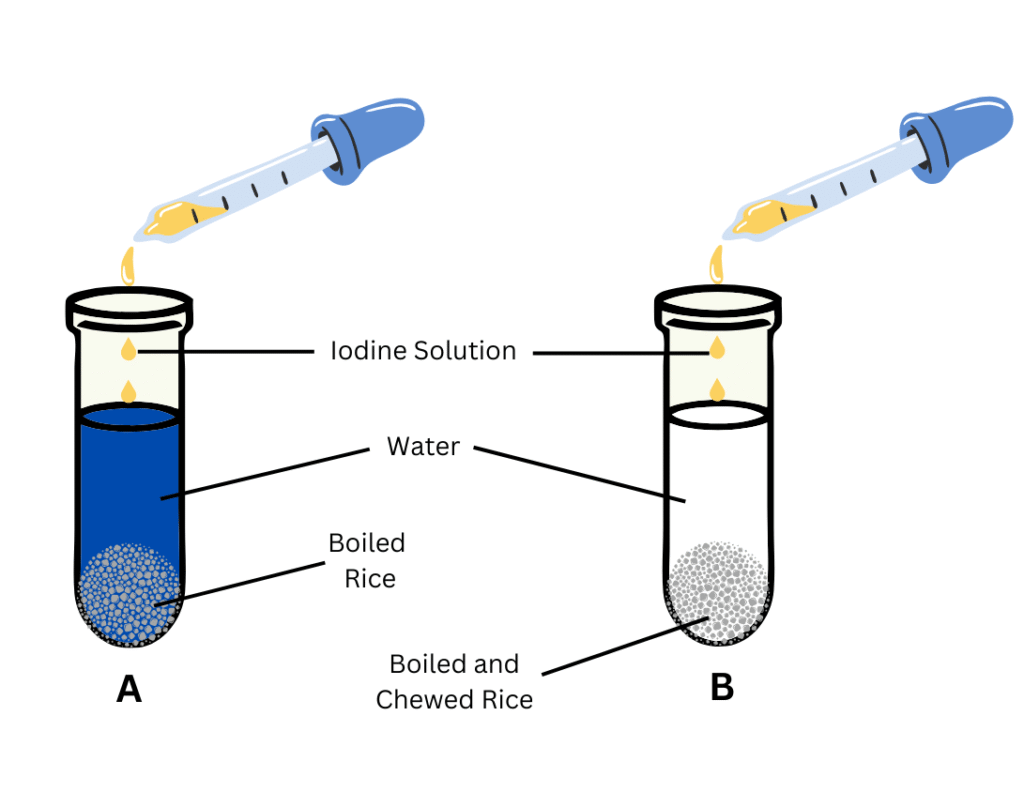3. Complete Activity 2.3 (Page 14). Take two test tubes. Label them ‘A’ and ‘B’. In test tube ‘A’ put one teaspoonful of boiled rice; in test tube ‘B’ keep one teaspoonful of boiled rice after chewing it for 3 to 5 minutes. Add 3–4 mL of water in both the test tubes (Fig. 2.4). Now pour 2–3 drops of iodine solution in each test tube and observe. Why is there a change in colour in the test tubes? Discuss the results with your classmates and your teacher.
Answer:
The activity can be carried out as below:
Aim: To observe if the test tubes containing chewed and unchewed rice change colour in contact with iodine solution and conclude.
Materials Required: Two test tubes, water, iodine solution, boiled rice, boiled and chewed rice.
Procedure:
(i) Take two test tubes and label them ‘A’ and ‘B’
(ii) In test tube ‘A’ put one teaspoonful of boiled rice and in ‘B’ put one teaspoonful of boiled rice after chewing it for 3-5 minutes.
(iii) Add 3-4 mL of water in both test tubes.
(iv) Then add 2-3 drops of iodine solution in both test tubes and make note of the changes.
Observation:
You will notice that the colour in test tube A with boiled rice (without chewing) changes to blue-black on addition of the iodine solution. The colour in test tube B which contains boiled rice after chewing does not change. This is shown in the figure below:

Conclusion: The starch in test tube B was broken down into sugars by saliva while chewing. The iodine solution does not react with sugars. This proves that saliva breaks down starch into sugars.
“Take two test tubes. Label them ‘A’ and ‘B’. In test tube ‘A’ put one teaspoonful of boiled rice; in test tube ‘B’ keep one teaspoonful of boiled rice after chewing it for 3 to 5 minutes. Add 3–4 mL of water in both the test tubes (Fig. 2.4). Now pour 2–3 drops of iodine solution in each test tube and observe. Why is there a change in colour in the test tubes? Discuss the results with your classmates and your teacher.” – Solved.
Solution to Extended Learning Problem 1
Solution to Extended Learning Problem 2
Solution to Extended Learning Problem 3
Solution to Activity 2.1
Solution to Activity 2.2
Solution to Activity 2.4
Solutions to Chapter 2 Nutrition in Animals


